| Back to Back Issues Page |
 |
|
Bangkok Travelbug May 13 Thao Suranari – the heroine of Korat April 29, 2013 |
| Hello
Korat - general information Nakhon Ratchasima or Korat in short is the largest province in Thailand with a land area of approximately 20,500 sq km. It’s located on the Korat plateau which is about 150 – 300 m above sea level. Korat city, the provincial centre is about 250 km from Bangkok. Korat is called the "Gateway to Issarn" and a transport hub. The city is located at the south-western edge of the Korat plateau and all road and rail links between Bangkok and north-east Thailand pass through Korat. From Korat there are buses linking Bangkok and the Issarn provinces. Trains to Issarn pass through Korat before the line splits, one to Nong Khai to the north and another to Ubon Ratchathani to the north-east. Map of Korat province showing size relative to Thailand View Nakhon Ratchasima in a larger map Table of contents Korat – brief history Korat was part of the Angkor Empire till the decline of the empire in the 1420s. During the Ayutthaya period in the 1600s, Korat was a city kingdom who didn’t always submit to the authority of Ayutthaya. 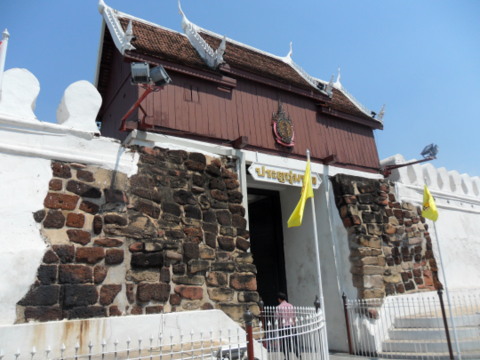
Chumphon Gate – that was part of the walls of the old city 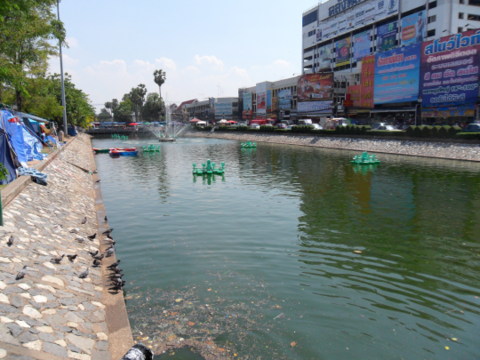
Part of the old moat After the fall of Ayutthaya in 1767, King Taksin (1768 – 1782) drove the Burmese out and consolidated Korat into Siam. By the reign of King Rama I (1782 – 1809), the Siamese empire consisted of several tiers of power with Bangkok as the centre.
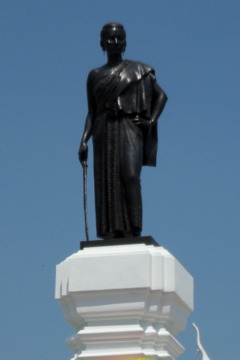
In the reign of King Rama III (1824 – 1851) the rulers of Vientiane and Champassak rose in rebellion against Siam. It was in the ensuing battles, that the wife of the deputy governor in Korat left her name in Thai history. Note: *Champassak, Luang Prabang and Vientiane were formerly part of the Lan Xang kingdom in modern day Laos. Lan Xang was founded in the mid-14th century and at the height of its power included Lan Na kingdom in northern Thailand based in Chiang Mai. In 1695, succession conflicts caused Lan Xang to breakup into three city kingdoms. #Chiang Mai was fully integrated in the Siamese kingdom in 1874 in the reign of King Rama V (1868 – 1910) Table of contents Khunying Mo In the year 1771 AD, a baby girl was born to Kim and Boonma in Nakhon Ratchasima. She was named Mo and grew up to be capable and intelligent. At 25 she married Thongkham who was in the provincial administration. He later became the deputy governor of Korat. When Mo’s husband acquired nobility status of Phrapalat, she was addressed as Khunying Mo. Meanwhile more than 400 km to the north across the Mekong, rebellion was in the air. Chao Anu ruler of Vientiane was chafing under Bangkok rule. His power grew when his son Chao Yo became ruler of Champassak in 1819. In January 1827, father and son combined forces and crossed the Mekong, advanced south and quickly occupied Korat. At that time the governor of Korat was out of the city with most of his officials and troops. The troops left in the city were quickly overwhelmed. Khunying No with her husband and the residents of Korat were taken prisoner to be brought back to Vientiane while the main Lao forces continued their advance. Khunying Mo rallied her people and kept their moral high. She also plotted to win over the confidence of the Lao leaders and to sabotage the movement of the column. Wagon wheels started breaking off. Khunying Mo convinced the Lao to provide axes for wood to repair the wheels. Spears were made and the weapons were hoarded. Later in the journey, she pleaded with the Lao commander to let the prisoners rest. The women offered to cook for the troops. Knives were acquired to prepare the food. During dinner, the prisoners attacked their captors, slaughtered them and sent the survivors fleeing. Meanwhile the main Lao forces advanced towards Bangkok but were stopped at Saraburi. This gave the Siamese time to mobilise three armies to repel the Lao. A major battle was fought at Nong Bua Lampu and Chao Anu and his troops were defeated. For her act of bravery, King Rama III awarded Khunying Mo the royal title of Thao Suranari (Brave Lady). Today there is a monument in Korat in her honour. There is also a military camp in Korat and a military task force named her. 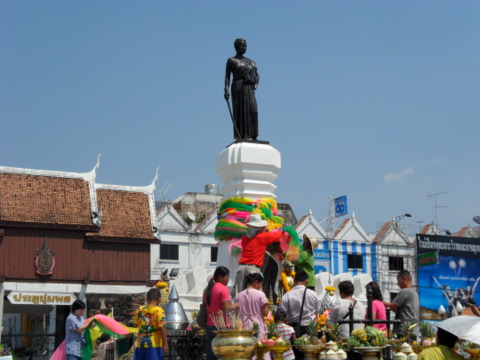
Thao Suranari Monument 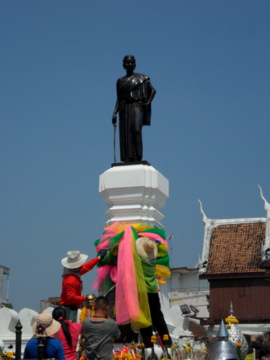
To the people of Korat, she is affectionately called Ya Mo (grandmother Mo). Table of contents Thao Suranari Annual Fair There’s an annual fair in Korat to honour Thao Suranari. This year the fair was from 23 March – 3 April 2013. It was blazing hot when I arrived on the Sunday afternoon of 24 March. 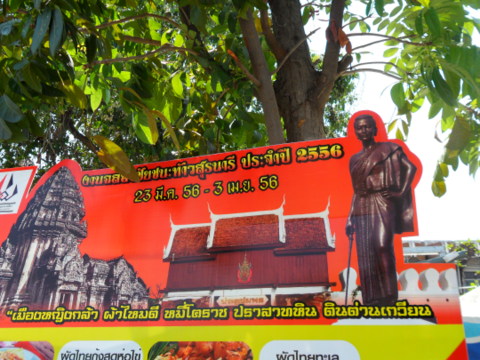
Thao Suranari Annual Fair 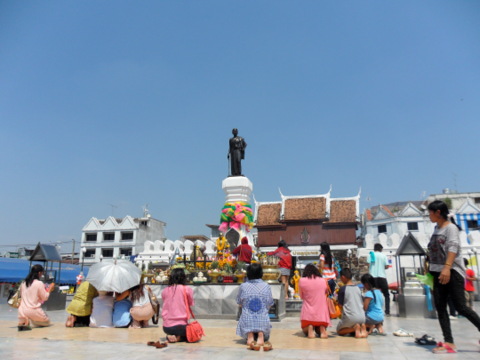
Praying at the monument – the Chumphon Gate is to the right of the monument Temperatures were hovering around 40 degrees Celsius and most of the vendors at the fair open only in the evenings. However those that were open were interesting enough. Strolling along the covered stalls provided some relief from the heat. There were the usual food and clothing vendors that you would see at all fairs. However, this stall was unusual. It sold a variety of deep-fried insects. I didn’t enquire about the details. 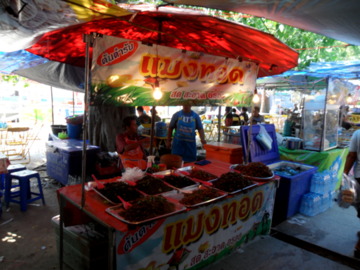
Assorted insects Two huge glasses of coconut juice couldn’t wrench my thirst. But this very different drink did. It’s the first time I’ve tasted it in all my years in Thailand. It’s called "tukata nam tan". 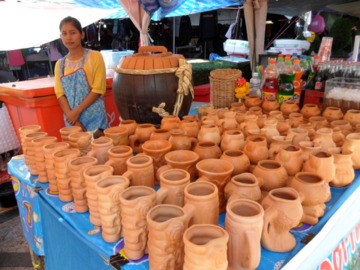
Wonderful thirst quencher It’s made of fresh sugar from the Palmyra Palm. Served in a plastic mug, it costs 20 baht. For 10 baht more you get it this earthen mug and it tastes much better and I felt refreshed. What’s more I got to keep the mug as a souvenir! 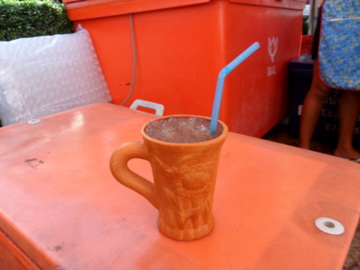
Souvenir from the fair There was a small crowd of spectators around this elderly craftsman who was arranging flowers of a different kind. These were artificial plants made from cutting coloured plastic strips to the required shapes and made into beautiful arrays. 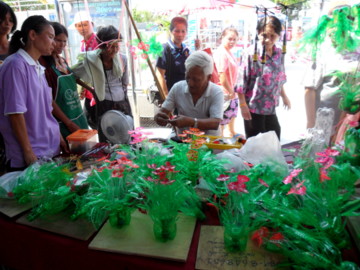
Plastic flowers This was the kind of armour worn by soldiers during that period and must have been popular with the kids. 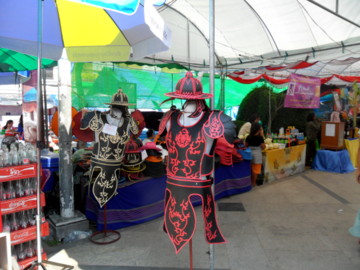
Period armour The section selling orchids was particularly attractive. The vendors had on display a colourful variety of orchids. 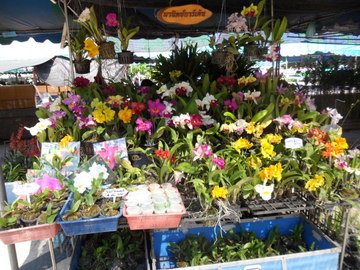
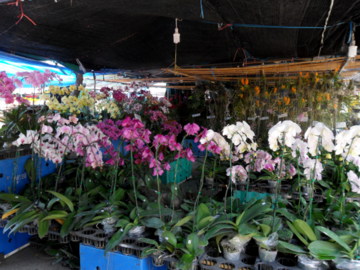
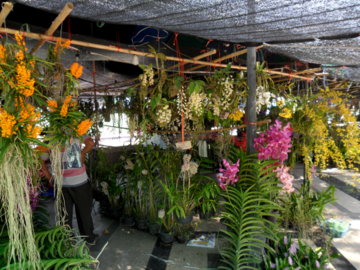
Table of contents Map of Korat city View Korat city in a larger map How to get to Korat By train There are trains leaving Hua Lamphong station Bangkok at regular intervals to Korat. Travelling time is dependent on the type of train. By tour bus A faster way would be by express tour bus from the Northern Bus Terminal at Mor Chit in Bangkok to the Korat bus terminal 2 (new terminal). This takes about three and a half hours and doesn’t cost more than 200 baht. If possible don’t take the air-conditioned non-express bus (class 2). It takes almost four and half hours (fare 171 baht). By mini-bus The mini-buses from the Victory Monument take three hours but terminate at Pak Chong (fare 180 baht). You will have to take another mini-bus to Korat city (fare 60 baht). Mini-buses from Mor Chit go directly to the bus terminal 2 in Korat city. Getting around Korat As a visitor, the most convenient form of public transport is the tuk tuk. These are available at the bus terminal and also at major junctions. Agree on the price before boarding. Where to stay – hotels in Korat near the monument Chomsurang Hotel K H Chao Phraya Inn Korat Resort Punjadara Hotel Ratchaphruk Grand Hotel Siri Hotel Sripattana Hotel Table of contents Next month Bang Phli – the 150 year-old market 

If you enjoyed reading this e-zine, please forward it to a friend. If you received this from a friend and found it interesting, please subscribe at Bangkok Travelbug. What you think of the Bangkok Travelbug? We love to hear from you What other subscribers have said Till next month then. Eric Lim Find us on Facebook Stay updated with what’s new at Tour Bangkok Legacies. Copy the link below and paste it into your Google Reader, NetNewsWire or your favourite feed reader. https://www.tour-bangkok-legacies.com/tour-Bangkok-legacies.xml If you use My Yahoo! or My MSN, head over to my home page and click on the button for your favourite Web-based feed reader. Visit our home page at Tour Bangkok Legacies. Copyright@2008-2009 Tour Bangkok Legacies. All rights reserved |
| Back to Back Issues Page |